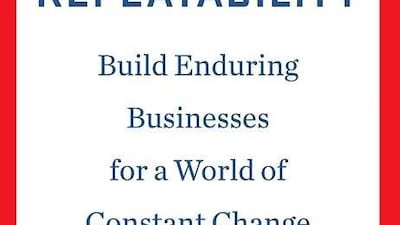For 25 years the Institut du Monde Arabe (Arab World Institute) in Paris has been a leading light for the study and display of Arab and Islamic culture in France, a country where six per cent of the population is thought to be Muslim - the largest percentage in Europe.
Commissioned by the former president François Mitterrand as one of his grands projets, designed by the renowned architect Jean Nouvel and completed in 1987, the cultural foundation on the banks of the Seine now attracts more than one million visitors a year.
This year the institute has celebrated the quarter-century mark with an ambitious programme of exhibitions, concerts and debates. The cultural season now concludes with a panoramic exhibition of contemporary Arab art, 25 ans de Créativité Arabe (25 years of Arabic Creation), curated by the Egyptian art critic and specialist Ehab El Labban.
El Labban set himself the task of selecting work that represents the most recent trends and inspirations in emerging Arab art. The result is a show that includes work by 40 artists working in painting, sculpture, photography, video and installation.
"We want the exhibition to form an almost integral vision of the contemporary Arab art scene," he says. "Therefore, it has to represent all the different domains Arab artists are working in today and the visions they are pursuing.
"To this end we've brought together the work of artists who we feel reflect this scene with its many different preoccupations. Each artist represents a specific interest that is dominant among Arab artists working today."
Throughout its history, the Institut du Monde Arabe (IMA) has followed the evolution and development of contemporary Arab visual arts. For this celebratory exhibition, "we didn't want to take a retrospective look at the institute's past but rather celebrate the fact that for 25 years we have been mounting shows of contemporary art", says Aurélie Clemente-Ruiz, a historian and the head of exhibitions at the IMA.
"It's important to remember that this institute was the first to show contemporary art coming out of the Arab world and we gave these artists a public before their work became fashionable," she says.
"Over the past decade alone, the number of galleries and museums in European capitals representing the work of Arab artists has multiplied beyond measure, while in the Arab world, the contemporary art scene has assumed a hitherto unprecedented cultural and financial importance. It is impossible to assess the contribution of a cultural institute such as the IMA to this development but it is obvious that its role has been significant."
For El Labban, the importance of the IMA lies in its diffusion of Arab culture and art in particular. "The IMA has become a centre of attention for intellectuals and Arab artists as it forms a sort of bridge to the western world," he says. "Putting the show together has been an enormous responsibility. In having to focus my regard on work from across the Arab world, I've realised to what extent I live in a small part of the community. The closer I look, the more I find out and the more I learn.
"Of course, it's difficult to speak of Arab artists as a whole. The term 'the Arab world' encompasses 22 countries, most of which are represented in this show, and these countries share a certain history and language, but each have their own cultures and their own collective psychology. I hope that I've demonstrated this diversity in the exhibition by approaching the artists' work through different axes that deal with artists of different countries and cultures."
With such diversity within the Arab world, it is hard to say whether these artists share a common source of inspiration, he adds.
"Inspiration is, of course, particular to the background and past of each artist but if we look at recent sources of inspiration, we can say in general terms that many of the artists are motivated by political and social concerns. Nor do I think that there's a dominant discipline among Arab artists. There are perhaps artistic preoccupations that dominate more than others or a particular artist's work will have more influence than others - but that's always liable to change.
"I don't think that the tendencies demonstrated by Arab artists are very different to the interests that are present in other contemporary artists' work. But there are perhaps certain subjects that dominate."
The details - El Labban has grouped the work into four themes
- Pieces that observe or delve into the political scene.
- Pieces that deal with social, economic or religious phenomena, which impact indirectly on regional politics.
- The artistic tradition of perseverance and determination in pursuit of an aesthetic that depends on technique and facility as well as the ideas contained in the work.
- Pieces that have arisen from a certain vision of globalisation and that resort to a global medium to look beyond local particularities and regional preoccupations.
- Artists on show include the Lebanese designer and architect Nadim Karam, the Egyptian Youssef Nabil, the Tunisian Meriem Bouderbala, the Syrian Safwan Dahoul, Reem Al Faysal from Saudi Arabia, the Moroccans Mounir Fatmi and Mahi Binebine, Hassan Meer from Oman, Basma Alsharif from Palestine and Waheeda Malullah from Bahrain, among many others.
25 ans de Créativité Arabe runs until February 3 at the Institut du Monde Arabe, Paris, France. For more information, visit www.imarabe.org

